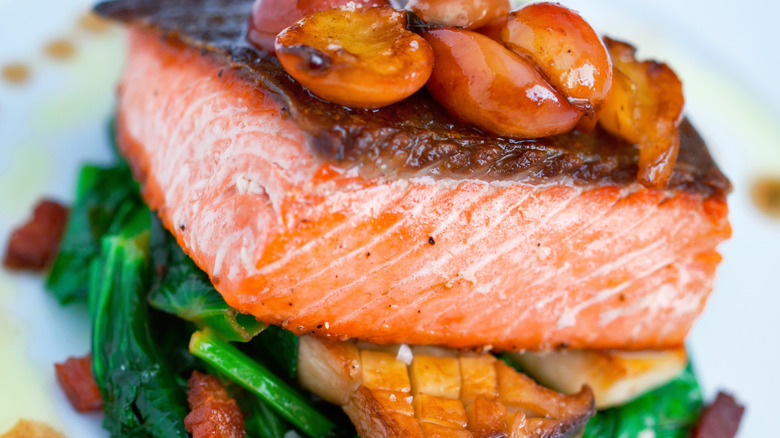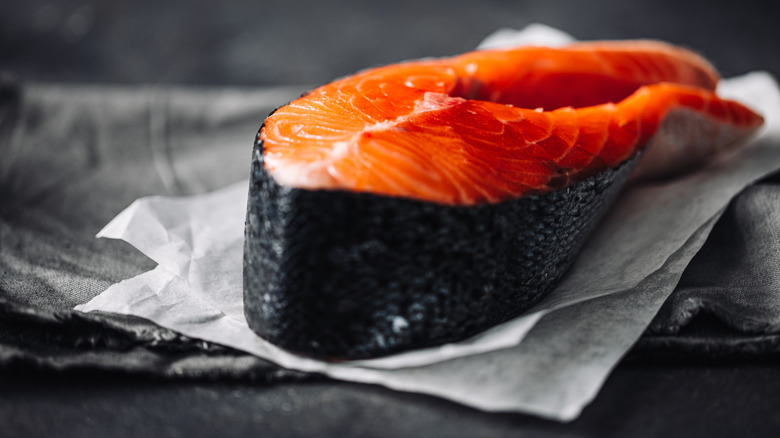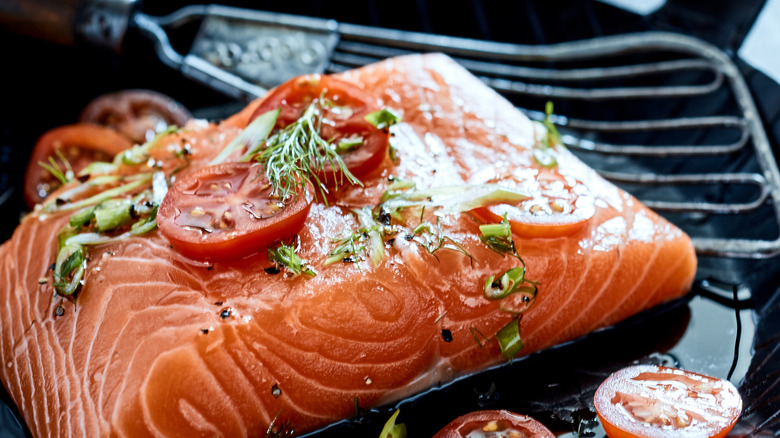The Secret To Crispy Pan-Seared Salmon Is All In The Skin
In most instances, people avoid cooking salmon because of some of the difficulties involved, which customarily come from the delicate nature of the meat and its tendency to become crumbly and dry if not adequately prepared. Additionally, eaters offered a salmon dish with soggy skin will often throw the mercurial protein back if social conventions allow it. That fact presents another issue for those cooking in the comforts of their kitchen regarding the protein's texture: how to make the skin crispy.
Granted, the whole process requires some attentiveness when trying to achieve that satisfying crunchy crust. So, try to have a watchful eye while preparing a fillet since things like moisture content, the amount of heat applied, and the length of cooking time matter when acquiring a crackling-esque texture on the skin.
Nevertheless, there's no need to fret. There's a trick to getting crispy pan-seared salmon, which comes down to the skin itself.
Salmon has a lot of fat content, so use it
It's important to remember that salmon has a substantial layer of fat under the skin. This is key to achieving that highly sought-after crispiness because it renders as it cooks to obtain the desired results, so it's best practice to begin the cooking process with the skin side down to melt the fat into it.
The fat provides insulation and a buffer between the direct heat and the fish's flesh, preventing overcooking and unpleasant leaky white albumen. As a result, the meat can spend most of the cooking time with the skin facing downward, with only a minimal flip to finish the dish.
Things to remember: No matter what pan and oil are used, ensure preheating both, discouraging the skin's sticking and tearing. Also, make sure to towel-dry any excess moisture from the fish before cooking and season generously — this will deter any remaining water from throwing off the applied heat when placed in the skillet. Moreover, using spices before cooking can help remove that dreaded fishy smell.
Technique and a watchful eye are essential
Once everything is in place to put the protein in the pan, don't hesitate and remain confident. If there's any doubt about using fingers to lay it in the oil, utilize a flexible fish spatula for balance. After setting the fillet, press it slightly for a few seconds. This will keep the skin from curling and give the best results when reaching for that crisp texture. Incidentally, using a fish spatula will make removing the meat from the skillet easier upon flipping.
The last thing needed before creating a delicious meal that will undoubtedly leave any dinner guests guessing at the chef's secret is deciding when to flip and consider the dish finished.
Most of the cooking will happen with the skin side down, and the protein should only need a few seconds on its other side. Nevertheless, while salmon is traditionally eaten around medium rare to prevent dryness, it's wise to use a meat thermometer to gauge doneness. As the Food and Drug Administration warns, it's crucial for seafood to reach at least 145°F, or it may be unsafe to eat.


